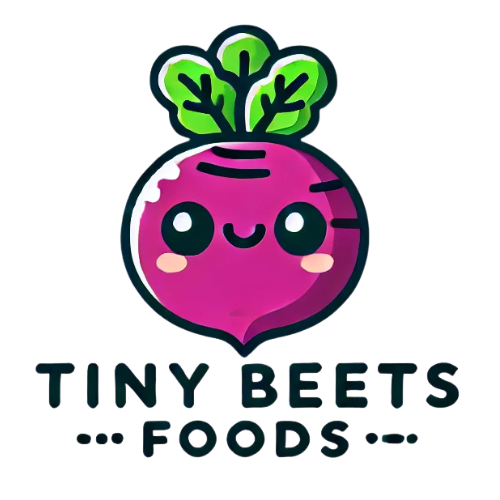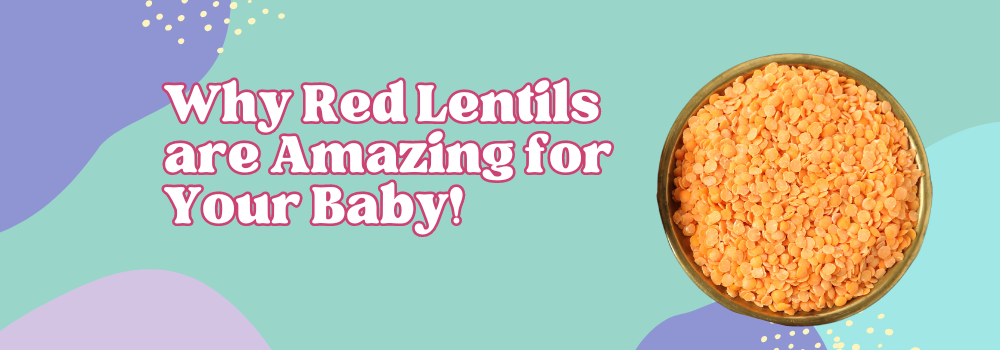Why Red Lentils are Amazing for Your Baby!
Hey mamas! Have you tried red lentils for your little ones? Here’s why they’re a game-changer! 🌟
Packed with Nutrients 🌱
Red lentils are bursting with protein, iron, folate, and fiber – everything your baby needs to grow strong and healthy!
Gentle on Tiny Tummies 🌿
These little gems are super easy to digest, so no more tummy troubles for your precious one! 💧
Boosts Brain Power 🧠
Full of iron, red lentils support healthy brain development. Pair with some vitamin C-rich foods for even better absorption! 🍊
Immune System Hero 🛡️
Rich in vitamins and minerals, they help keep your baby’s immune system strong and ready to fight off those pesky germs! 🌟
The Wonder of Red Lentils
Introducing solid foods to your baby's diet can be both exciting and challenging. As parents, we always strive to provide the best nutrition for our little ones. Among the many choices, one food stands out for its exceptional health benefits: red lentils. These tiny legumes are not only nutritious but also incredibly versatile and easy to prepare. In this article, we’ll dive deep into why red lentils should be a staple in your baby’s diet.
The Nutritional Powerhouse
Red lentils are a nutritional powerhouse. They are packed with essential nutrients that are crucial for your baby's growth and development.
Protein
Protein is vital for the growth and repair of tissues in your baby’s body. Red lentils are an excellent source of plant-based protein, making them an ideal choice for vegetarian or vegan families. Just one cup of cooked red lentils provides around 18 grams of protein, which is essential for building strong muscles and supporting overall growth.
Iron
Iron is crucial for the production of hemoglobin, which helps carry oxygen throughout the body. Babies need adequate iron for brain development and to prevent iron-deficiency anemia. Red lentils are rich in iron, providing about 6.6 milligrams per cup. To enhance iron absorption, pair red lentils with foods high in vitamin C, such as citrus fruits, tomatoes, or bell peppers.
Folate
Folate, also known as vitamin B9, is essential for the formation of DNA and other genetic material. It is particularly important during periods of rapid growth, such as infancy. Red lentils are an excellent source of folate, providing about 358 micrograms per cup, which is more than the daily requirement for babies.
Fiber
Fiber is important for maintaining healthy digestion. Red lentils are high in both soluble and insoluble fiber, which helps regulate bowel movements and prevent constipation. This makes them gentle on your baby’s delicate digestive system.
Easy to Digest
One of the most significant advantages of red lentils is that they are easy to digest. This is especially important for babies who are just starting on solid foods. The high fiber content in red lentils helps to prevent digestive issues, making them a perfect choice for sensitive tummies. Additionally, they are less likely to cause gas compared to other legumes, ensuring a comfortable feeding experience for your little one.
Enhancing Brain Development
Iron is essential for brain development, and red lentils are a fantastic source of this crucial nutrient. Adequate iron intake supports cognitive development, which is critical during the early years of life. To maximize the benefits, combine red lentils with foods rich in vitamin C, such as strawberries or kiwi, to improve iron absorption.
Strengthening the Immune System
A strong immune system is vital for protecting your baby against illnesses. Red lentils are rich in vitamins and minerals that help boost the immune system. They contain zinc, which plays a crucial role in maintaining a healthy immune response. Incorporating red lentils into your baby’s diet can help keep those pesky germs at bay and ensure your little one stays healthy and happy.
Versatility in Cooking
Another great reason to include red lentils in your baby’s diet is their versatility. They can be used in a variety of dishes, from soups and stews to purees and casseroles. Here are a few simple recipes to get you started:
Red Lentil Puree
Ingredients:
- 1 cup of red lentils
- 3 cups of water
- A pinch of turmeric (optional)
Instructions:
- Rinse the red lentils thoroughly under cold water.
- Combine the lentils and water in a pot and bring to a boil.
- Reduce the heat and simmer for about 15-20 minutes until the lentils are soft.
- Add a pinch of turmeric if desired.
- Blend the cooked lentils into a smooth puree using a hand blender or food processor.
- Allow the puree to cool before serving.
Lentil and Vegetable Soup
Ingredients:
- 1 cup of red lentils
- 1 carrot, chopped
- 1 small potato, chopped
- 1 tomato, chopped
- 4 cups of water or vegetable broth
- A pinch of cumin (optional)
Instructions:
- Rinse the red lentils thoroughly under cold water.
- Combine all the ingredients in a pot and bring to a boil.
- Reduce the heat and simmer for about 30 minutes until the lentils and vegetables are soft.
- Blend the soup to the desired consistency using a hand blender.
- Allow the soup to cool before serving.
Dont want to cook?
Check out our pre made baby food:
Allergies and Precautions
While red lentils are generally safe for babies, it’s important to introduce them gradually and watch for any signs of allergies. Symptoms of a lentil allergy may include hives, swelling, or difficulty breathing. If you notice any of these symptoms, consult your pediatrician immediately. Additionally, ensure that the lentils are cooked thoroughly to avoid any potential digestive issues.
Sustainability and Red Lentils
Red lentils are not only beneficial for your baby’s health but also for the environment. They are a sustainable crop that requires less water and fewer resources compared to animal-based protein sources. By choosing red lentils, you are making an environmentally conscious decision that supports sustainable agriculture.
Tips for Introducing Red Lentils
Introducing new foods to your baby can be a fun and rewarding experience. Here are some tips to make the process smooth:
- Start Slow: Begin with small amounts of red lentil puree and gradually increase the quantity as your baby gets used to the new taste and texture.
- Mix and Match: Combine red lentils with familiar foods like sweet potatoes or carrots to make the transition easier.
- Observe and Adapt: Watch for any signs of discomfort or allergies and adjust accordingly. Every baby is different, so it’s essential to tailor the introduction to your baby’s needs.
- Stay Consistent: Consistency is key. Offer red lentils regularly to help your baby develop a taste for them.
Frequently Asked Questions
Q: When can I start feeding my baby red lentils?
A: Red lentils can be introduced to your baby’s diet around 6 months of age, once they are ready for solid foods. Always consult your pediatrician before introducing new foods.
Q: How should I prepare red lentils for my baby?
A: Red lentils can be prepared in various ways, such as purees, soups, or mixed with vegetables. Ensure they are thoroughly cooked and blended to a smooth consistency for easy digestion.
Q: Are red lentils safe for babies with sensitive stomachs?
A: Yes, red lentils are generally gentle on the stomach and can help prevent digestive issues due to their high fiber content. However, it’s important to introduce them gradually and observe your baby’s reaction.
Conclusion
Red lentils are a fantastic addition to your baby’s diet, offering a wide range of health benefits from boosting brain development to strengthening the immune system. They are easy to digest, versatile in cooking, and packed with essential nutrients that support your baby’s growth and development. By incorporating red lentils into your baby’s meals, you are not only providing them with a nutritious food option but also making an environmentally friendly choice. So, mamas, it’s time to embrace the goodness of red lentils and watch your little ones thrive!
Happy feeding! 🌟








